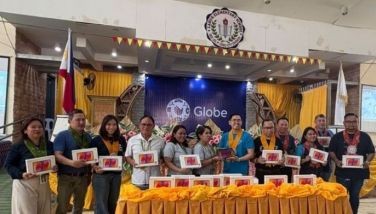Lessons from Boracay
Boracay, a world renowned tourist destination, having garnered the 2012 award for Best Beach in the World from the Traveller’s Choice Awards shows more than the scintillating waters and white sand beaches.
Boracay can also pride itself of an effective waste management system.
With our growing population, garbage seems to come in as a by-product. In Boracay, the influx of tourists everyday also brings with its business, heaps of garbage.
Years ago, the island was jolted with the concern over E. coli, a bacteria commonly found in wastes to be noted the islands waters. This forced the local government and the local businesses to look into solutions to address this predicament.
The community, set up a waste water system to filter the waste water in the island. They came up with strict garbage segregation procedures and enforcement for both business establishments and residential areas. They employed a strong campaign to advocate for segregation at source. Volunteers were fielded to influence every household.
The pains brought about by a strong political will to discipline a community and its visitors bore fruit as the residents have learned to protect and preserve the now garbage-free beaches and cool safe waters of the island.
It was learned that the waste management started in one barangay. That is, Barangay Balabag. “We had to return and even at times pour garbage in front of the establishment who would give us unsegregated garbage,” former Barangay Captain Glen Sacapano (Kap Glen) of Barangay Balabag, and now Solid Waste Warden of the island, said.
“Eventually, we all understood the need to follow good waste management practices and saw its impact on our businesses as well as the well-being of the families residing in the island until the practice became a habit.”
In the past Kap Glen used to even kid his constituents about making garbage management as a tourist attraction. And without his knowing it, many local government units have been to their area to visit to see how they could replicate the success in their own towns.
In 2010, the local government in partnership with San Miguel Corporation, and Petron Foundation launched a program called “Para sa Boracay Ako, For Boracay, I will…” which garnered hundreds of volunteers from all walks of life in the island to keep the island clean. A municipal ordinance crafted in 1996 declaring Boracay as a litter-free zone was given more teeth with the strong enforcement of its sanctions.
When you enter the boat that ferries you to the island, the boatmen themselves already orient the guests on the policies regarding waste management. Even cigarette butts are strictly monitored. Food scraps and empty containers left at the beaches are not allowed. The resort owners and waiters ensure that leftovers are not left on the sand and environment patrols are done daily in shifts to ensure that rules are adhered to. The airport has joined in the campaign by publishing through its television monitors the programs of the island against littering.
Now all the three barangays in the island have set up their own materials recovery facility (MRF). They produce their own bricks out of crushed bottles and plastics that used to be only waste material. Rosary beads and necklaces have been made out of recycled paper and other materials. A compactor, bundles together residual wastes to pack them into manageable portions that could be transported and used for more sophisticated recycling plants that could convert them into pails, slippers and even warmer underclothes for wintery areas. They have given credence to the claim that garbage can indeed be turned to cash.
Then volunteers from the communities are salaried employees of the barangays in their MRFs. The challenge remains. If this can be done in a small island like Boracay, it can be done in any part of the country. All it takes is sacrifice and discipline.
Can we handle these?
In the end, I learned that there were lessons Boracay gave me about humanity. There were the “here and now folks” and the “tomorrow” people.
The here and now lived for a day. Their motto is to let tomorrow take care of itself as you can’t outlive tomorrow. They make no effort to invest on tomorrow. They live only for themselves.
The tomorrow people concern themselves on their legacy. What they can do today for the generation that follows. They take responsibility for the actions they do and evaluate whether it will affect the future. They are starters and doers, and finish what they can for a tomorrow.
- Latest
- Trending
























